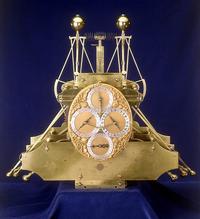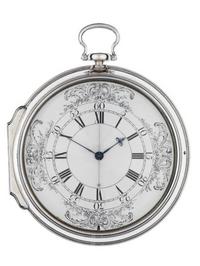I had the privilege recently to visit the Royal Observatory in Greenwich, England and see firsthand not only t he demarcation of 0° longitude, known as the Prime Meridian or the Greenwich Meridian, but also John Harrison’ s revolutionary timepieces. This visit is a rite of passage for mariners everywhere.
he demarcation of 0° longitude, known as the Prime Meridian or the Greenwich Meridian, but also John Harrison’ s revolutionary timepieces. This visit is a rite of passage for mariners everywhere.
For the uninitiated to celestial navigation or maritime, this location and these timepieces are essential aspects of maritime history and, in turn, the history of the world. It was not so long ago, as recently as the early parts of the 17th century that time could not be kept at sea. Chronometer technology today is ubiquitous but it was not always that way.
The problem of keeping time was paramount because it is a necessary piece of celestial navigation calculations, allowing mariners to determine their position at sea. Without it, sailors could not know for sure where in the ocean they were. As a result, many ships were lost and investment in ocean voyages was limited because their outcomes were unpredictable. World trade could not grow.
It is easy to determine latitude by using the sun but knowing longitude is dependent on knowing hours and minutes. For every 15° that one travels eastward, the local time moves one hour ahead. Similarly, travelling West, the local time moves back one hour for every 15° of longitude. Therefore, if we know the local times on two points on Earth, we can use the difference between them to calculate how far apart those places are in longitude.
Sailors in the 17th century could determine the local time of their location by observing the sun but they also needed to know the time at a reference point, such as Greenwich, in order to calculate their longitude. This required an accurate timepiece that could be carried aboard ship. Although clocks existed in that day, building one that remained immune to the motions and effects of the sea and kept accurate time was an elusive challenge.
Enter John Harrison. Harrison was a carpenter by trade and began building longcase clocks from wood with wooden mechanisms. Over time his clock designs moved through numerous evolutions as he improved each subsequent design. The challenges he overcame included building mechanical pieces immune to gravity, moisture, or temperature change. His designs truly were original and revolutionized sea-going time keeping. As a result of his work Harrison won the longitude prize, issued by the Board of Longitude, a body formed to promote finding a solution to the problem. The secondary result was that navigation and world trade were changed forever.
A photo of Harrison’s H1, the first version of his marine chronometer, can be seen above. The H4, which could be produced on a mass scale, is below. There is much more to the story, which you can find in Dava Sobel’s best-selling work, Longitude: The True Story of a Lone Genius Who Solved the Greatest Scientific Problem of His Time. I recommend it to anyone with a penchant for history, the sea, or the inner workings of clo cks.
cks.
